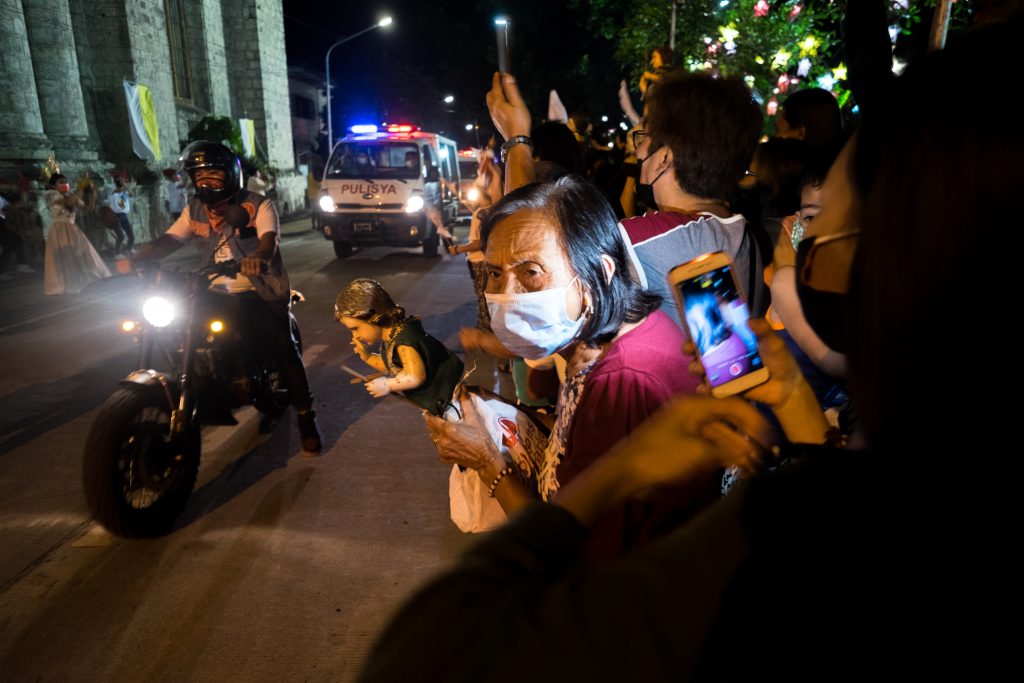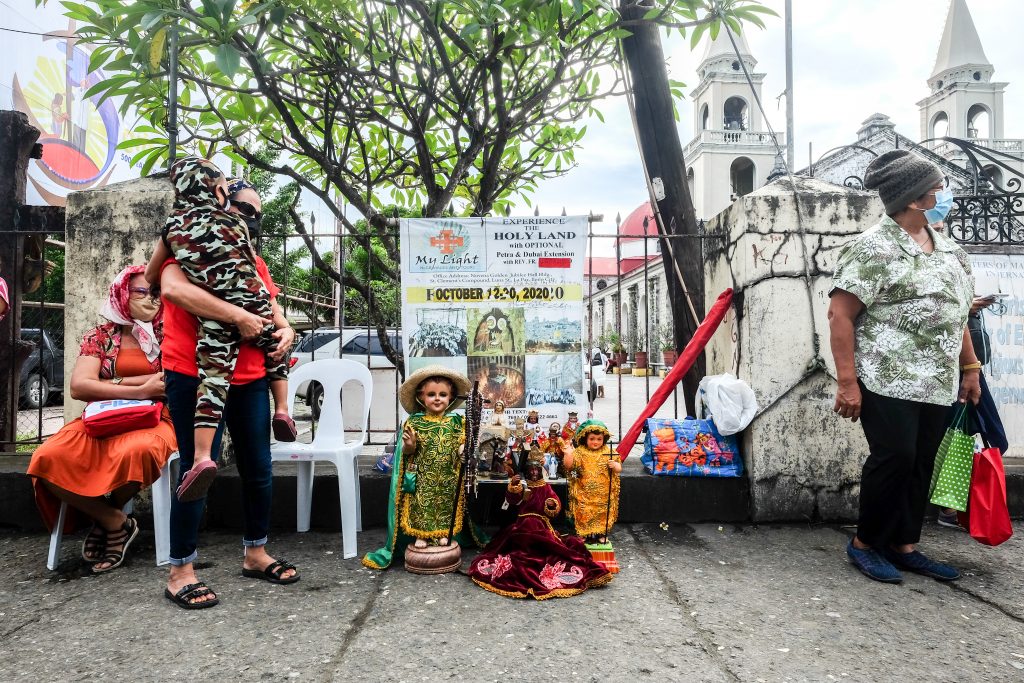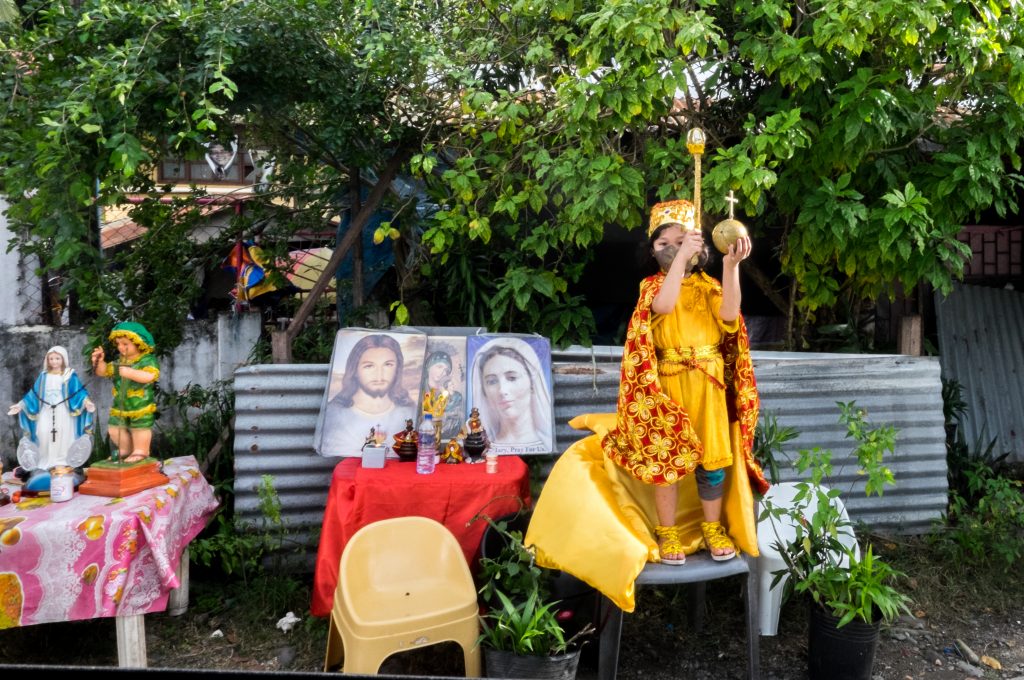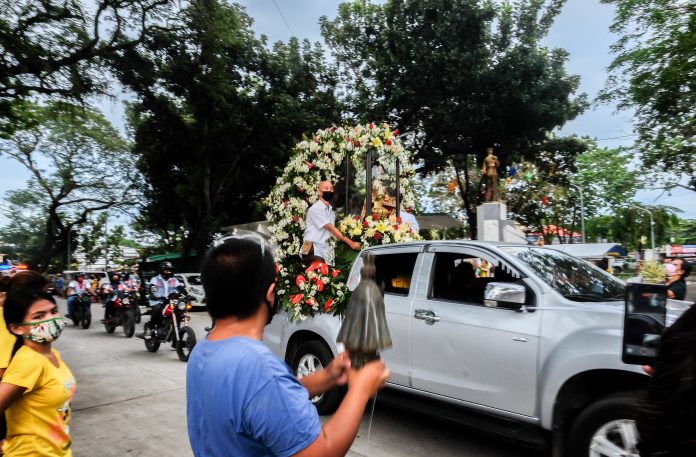Images of the Child Jesus, popularly known in the Philippines as the Santo Niño, were paraded in the streets of Iloilo in the central part of the country on Sunday, January 24.
The province was celebrating the “Dinagyang,” a religious and cultural festival in honor of the Child Jesus. It is held every year on the fourth Sunday of January, a week after the “Sinulog” festival of Cebu also in honor of the Santo Niño..
The “Dinagyang,” which means revelry, is celebrated every year to mark the arrival of the replica image of the Child Jesus in the province of Iloilo from the city Cebu in 1968.
Before the pandemic, Ilonggos, the natives of Iloilo, would to flock to the banks of Iloilo River to witness the reenactment of the acceptance of the people of the province of the Child Jesus.
The image would then be paraded along the river to the parish church of San Jose Placer where the original image was brought and kept more than 50 years ago.
This year, the pandemic has put a stop to the tradition and Church and civil authorities decided to suspend all the activities.
Instead, images of the Child Jesus were paraded across all seven districts of the city.
“Now it is the Santo Niño reaching out to the people,” said Augustinian priest Jose Gonzales.

Church officials decided to bring out the original image this year for the motorcade to mark the 500th anniversary of the arrival of Christianity in the country.
Father Gonzales said the image was not supposed to be exposed to the elements, but because the year is “special,” the 53-year-old image was brought out “to bless and to remind people of their faith.”
“Despite the limitations due to the pandemic, the motorcade actually drew more devotees,” said the priest, adding that people even lined up the streets.
Little sacrifices for ‘little Jesus’
May Junsay, 57, has been joining the procession of the Child Jesus every year since 2009.
“For two weeks, I’ve been listening to the radio for announcements,” she said.
When authorities declared that the Child Jesus would be brought out in a motorcade to all churches in the city, Junsay prepared her own image of the Santo Niño and brought it to the church.

“To bring him out and go through the hassle of following the health protocols is the least I can do,” she said.
The woman said she is a devout Catholic, but for some reason she finds herself “closer” to the Child Jesus.
“I feel like I can talk to him easily,” she said.
Lydia Diyesmesis, 55, waited for three hours outside the Jaro cathedral will all her miniature images of the Child Jesus to be blessed. She said she offered her sacrifice to the Santo Niño.
She was mistaken as a vendor because of the many images she brought and displayed outside the church, but the woman said she just laughed it off.
“The Child Jesus might be laughing at me, too,” she said.

Augustinian priest Ambrosio Galindez introduced the devotion to the Child Jesus to the Ilonggos after witnessing the Ati-Atihan festival in neighboring Aklan province.
In 1968, Father Sulpicio Enderez of Cebu brought a replica image of the Santo Niño de Cebu to Iloilo. It has since become the face of the devotion of the Ilonggos to the Child Jesus.
The Filipinos’ devotion to the Child Jesus started in 1565 when Spanish soldiers found the image under a pile of ashes in the central Philippine province of Cebu.
It was later discovered that the image was a gift of Portuguese explorer Ferdinand Magellan, head of the first Spanish expedition in 1521, to the queen of the island when she was baptized a Christian.









